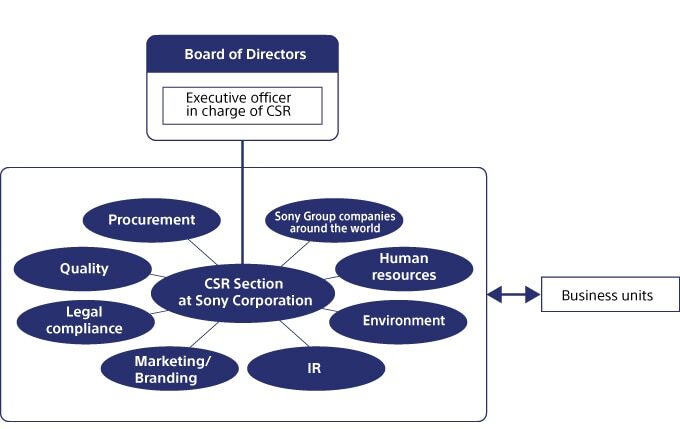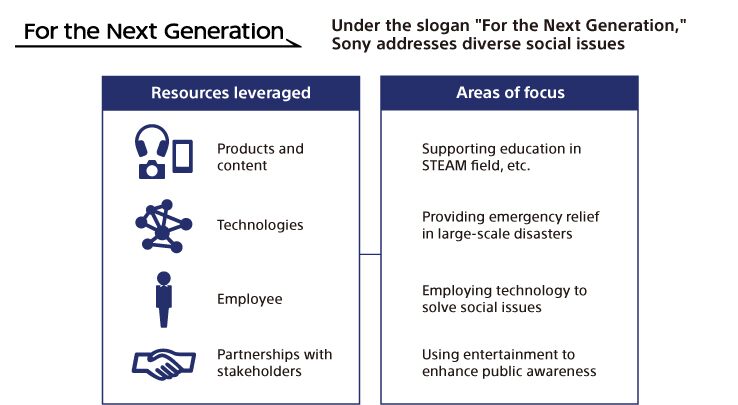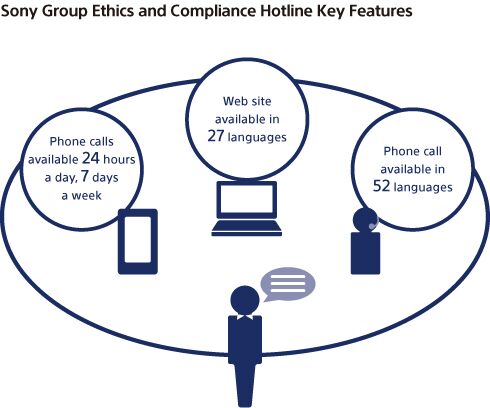As the world is continuously transforming, businesses have to adapt to environmental, societal, and economic changes. The ability to effectively and timely response to these changes by modifying the organizational structure, its goals, and practices can significantly benefit a company. Many organizations have announced new strategies to achieve some of the UN Sustainable Development goals, such as gender equality, responsible consumption, and economic growth (About the sustainable development goals, no date). Sony Corporation, for instance, is one of the first companies to include several societal responsibility commitments into its strategic planning and operation. This paper will link organizational changes of Sony Corporation with the McKinsey’s 7S model and analyze its promises towards the environment, employees and the public.
The first part of the 7S model that needs to be addressed is “strategy”. Strategy defines a business’s goals and plans that will improve its competitive advantage (Channon and Caldart, 2015). According to the president of Sony, the primary commitment that will lead the company until 2050 is the “Road to Zero” initiative (Yoshida, no date, para. 3). The corporation promises to operate entirely on electrical power by 2040 and, thus, keep itself on the market and grow its competitive advantage (Yoshida, no date, para. 3). Since people become very environmentally aware, “Adaptation and change are necessary for an organization’s survival” (Král and Králová, 2016, p. 5169). Sony’s commitment towards zero impact might as well be the only strategy to both keep the current market share and expand the future customer base.
In addition to the external factors, the corporation works to improve its workplace environment. This is crucial for the achievement of the goals set because strategy restructuring does not guarantee employee compliance (Wagner, 2019). To ensure inclusiveness and resolve inner conflicts, Sony promotes free communication policies, in which employees feel heard and protected (Promoting a speak up/listen up culture, 2019). This goes along with the “staff” aspect of the McKinsey model that is responsible for employee quality and well-being (Channon and Caldart, 2015). Providing its human capital with good working conditions can fasten corporate goal achievement.
The third driver of Sony Corporation’s change in society and education. The company operates under the “for the next generation” motto, which promotes accessible public education in sciences and technology (Policy, framework and main scope of community engagement, 2019). However, none of the three mentioned commitments will be met if they are not interpreted appropriately by the internal and external environments. For this reason, Sony has adopted a new operational structure, which resembles the 7S model, to enhance the progress of realizing its strategic plan (CSR organizational structure, 2019). The company attempts to rearrange communication to meet McKinsey’s “shared values” aspect – the core of company culture (Channon and Caldart, 2015). Having each department be included in the planning and implementation of societal commitments helps to ensure unity and cooperation within an organization.
Sony Corporation has shown great examples of successful organizational change as the company was able to restructure its values efficiently. Although their commitments towards society have transformed, they managed to keep the original purpose of being educative, responsible, and not harmful. Analyzing company transformations through McKinsey’s 7S model perspective represented the effects of the drivers for change on the organization. Sony established environmental promises that define its strategy for the upcoming decades, created communication channels for employees that improve staff quality and well-being, and restructured its managerial system to keep being an innovative and educative business. Due to quick and effective response to external changes, the corporation was able to transform itself successfully.
Reference List
About the sustainable development goals (no date) Web.
Channon, D. F. and Caldart A. A. (2015) ‘McKinsey 7S model’, Wiley Encyclopedia Management, 22 January, 12, pp. 1-2. doi: 10.1002/9781118785317.weom120005.
CSR organizational structure (2019). Web.
Král, P. and Králová, V. (2016) ‘Approaches to changing organizational structure: the effect of drivers and communication’, Journal of Business Research, 69(11), pp. 5169-5174. doi: 10.1016/j.jbusres.2016.04.099.
Policy, framework and main scope of community engagement(2019). Web.
Promoting a speak up/listen up culture (2019) Web.
Wagner, R. (2019) ‘Activating employees for sustainability – the importance of narrative and sensemaking in a salutogenic approach to internal CSR communication’, Proceedings of the 5th International CSR Communication Conference. Stockholm School of Economics, Stockholm, Sweden.
Yoshida, K. (no date) Letter to stakeholders. Web.
Appendix 1


